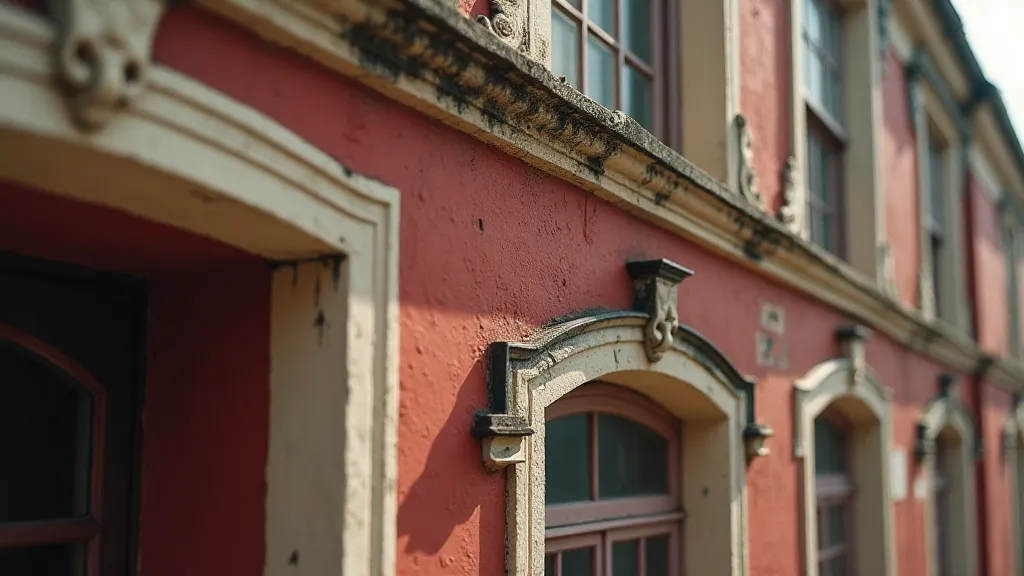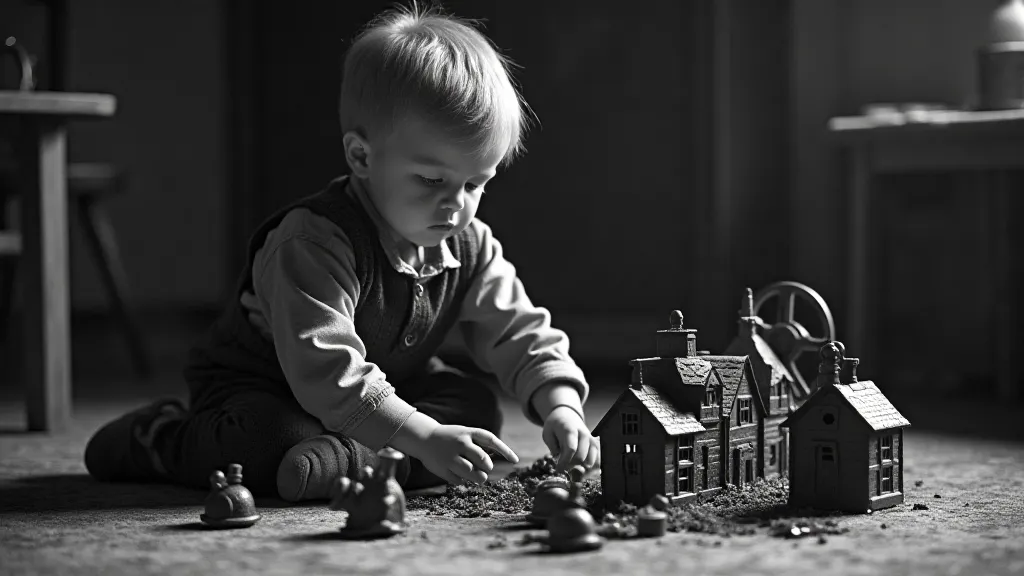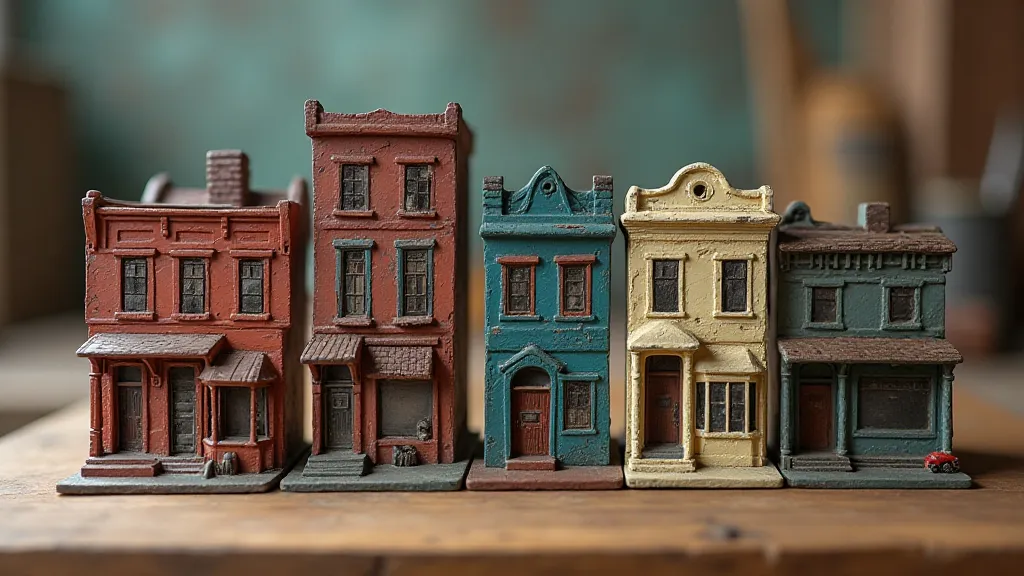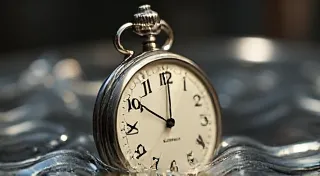The Miniature Metropolis: Mapping Childhood Aspirations in Cast Iron Towns
There's a particular scent that clings to old things – a blend of dust, aged metal, and the faintest whisper of vanished laughter. For me, that smell is inextricably linked to cast iron toys, specifically, the intricate town sets that became a defining emblem of late 19th and early 20th-century childhood. They weren’t just toys; they were miniature worlds, meticulously crafted representations of a rapidly changing urban landscape, reflecting both the soaring optimism and the nascent anxieties of a nation gripped by industrial progress. To hold one of these sets in your hands is to connect with a generation of children, dreaming of the future as they built their own little metropolises.
My grandfather, a quiet man rarely prone to sentimentality, possessed a small cast iron train depot. It was chipped and slightly rusted, certainly not pristine, but it held a significance far beyond its material value. He would occasionally let me, as a wide-eyed child, run my fingers over its rough surface, whispering stories of his own childhood in a bustling industrial town. He never explicitly explained its importance, but I understood, instinctively, that it was a portal to a simpler, yet undeniably complex, time.
The Rise of the Cast Iron Town
The late 1800s witnessed an unprecedented boom in American manufacturing. Cities swelled with immigrants seeking opportunity, factories belched smoke into the sky, and the idea of a modern, technologically advanced nation took root in the collective imagination. Cast iron, strong, durable, and relatively inexpensive to produce, became the perfect medium for capturing this spirit. Toy manufacturers like J.C. Stevens, Kenton, and Whitmore & Lewis capitalized on this, producing a dazzling array of cast iron vehicles, buildings, and figures. These weren’t toys intended to simply entertain; they were meant to educate, to inspire, and to offer a controlled glimpse into a world that was transforming at a dizzying pace.

The town sets themselves were more than just random groupings of buildings. They often featured intricate detailing, reflecting the architectural styles of the era – Victorian storefronts, grand hotels, bustling train stations, and of course, the ever-present fire station, a symbol of both civic duty and the ever-present threat of urban disaster. The figures that populated these worlds – policemen, delivery boys, newsboys – were imbued with a sense of purpose, reflecting the burgeoning middle class and the rise of a service-oriented economy.
More Than Just Play: Reflections of a Changing Society
It’s fascinating to consider what these miniature towns represented to the children who played with them. They were offered a controlled environment to explore the complexities of urban life. The predictability of the cast iron buildings, the steadfastness of the figures, offered a sense of order within a world that was rapidly changing. The trains, relentlessly chugging around the tracks, symbolized progress and the relentless march of time. However, beneath the veneer of optimism, there was also a quiet acknowledgment of the challenges facing urban society. The presence of a police station hinted at the rising crime rates, while the fire station served as a constant reminder of the potential for devastation.
The families who purchased these sets were often those striving for a better life. These toys represented more than just amusement; they were an investment in a child's imagination, a way to impart values of hard work, civic responsibility, and a belief in the promise of the future. The craftsmanship itself was a testament to a time when skilled laborers took pride in their work. The attention to detail – the precisely cast figures, the carefully painted buildings – reflected a commitment to quality that is often lacking in modern manufacturing.
The Evolution and Decline
The peak years for cast iron toy production were roughly from the 1880s to the 1920s. As the decades progressed, several factors contributed to the decline. The rising popularity of more affordable and complex toys made of pressed steel and, later, plastic, gradually eroded the market for cast iron. The Great Depression further dampened demand, and the advent of World War II brought production to a complete standstill. While some manufacturers attempted to adapt by producing smaller, less elaborate sets, the golden age of cast iron towns had passed.

Collecting and Preservation – Echoes of the Past
Today, antique cast iron toys, and particularly the town sets, are highly sought-after collectibles. Their rarity, historical significance, and inherent charm make them valuable both financially and sentimentally. Collecting these toys isn’t just about acquiring objects; it's about preserving a piece of history, about connecting with a generation of children who found joy and inspiration in these miniature worlds.
Restoration, when approached with care and respect for the toy's age and character, can be a rewarding process. It's crucial to avoid overly aggressive cleaning or repainting, as this can diminish the toy’s value and historical integrity. Gentle cleaning with appropriate solvents can remove surface grime, and careful repair of minor chips or cracks can help preserve the toy’s structural integrity. However, a truly remarkable piece often retains its patina – the marks of time that tell a story of its journey through generations.
The value of a cast iron town set is influenced by several factors: completeness – a complete set is far more valuable than a collection of individual pieces; rarity – some manufacturers produced fewer pieces than others; condition – as with any antique, condition is paramount; and provenance – a toy with a documented history can be significantly more valuable.

A Legacy of Imagination
Holding a cast iron toy in your hand is more than just examining an antique; it’s touching a piece of history, a tangible link to a time of incredible change and boundless optimism. They are silent storytellers, whispering tales of childhood aspirations and the enduring power of imagination. They offer us a glimpse into a bygone era, reminding us of the simple pleasures of play and the importance of preserving the legacy of craftsmanship. These miniature metropolises weren't just toys; they were windows into the hearts and minds of a generation, and their echoes continue to resonate today.





